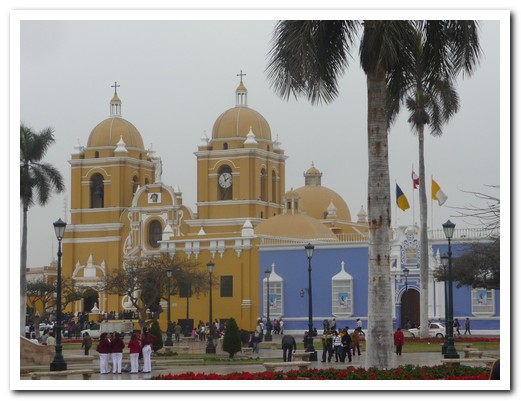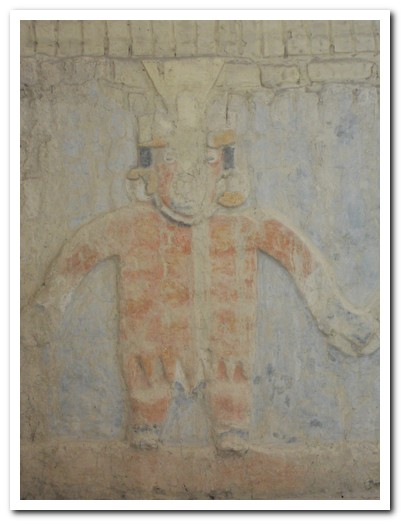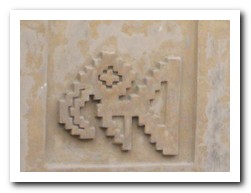Categories
- Argentina
- Chile
- Antarctica
- Easter Island
- Falklands (Malvinas)
- Bolivia
- Peru
- Uruguay
- Paraguay
- Brazil
- Venezuela
- Colombia
- Ecuador
- Galapagos
- Panama
- Costa Rica
- Cuba
- Nicaragua
- Honduras
- El Salvador
- Guatemala
- Belize
- Mexico
- Latin American Xmas
Pages
- Street Art of Buenos Aires
- A week in Buenos Aires
- The Jesuit Missions in South America
- Contact Us
- Map of Central America
- First week in Latin America – October 2009
- Home Page
- Map of South America
Archives
- October 2011 (3)
- September 2011 (9)
- August 2011 (10)
- July 2011 (7)
- June 2011 (6)
- May 2011 (11)
- April 2011 (10)
- March 2011 (4)
- February 2011 (5)
- January 2011 (6)
- December 2010 (6)
- November 2010 (4)
- October 2010 (8)
- September 2010 (5)
- August 2010 (7)
- July 2010 (5)
- June 2010 (6)
- May 2010 (6)
- April 2010 (7)
- March 2010 (6)
- February 2010 (9)
- January 2010 (4)
- December 2009 (8)
- November 2009 (5)
- October 2009 (2)
Southern Brazil
27th September 2010
After a week´s R&R in Florida visiting family, we were ready for Brazil. Crossing from Santo Tomé [1] in Argentina by local bus we arrived in São Borja [2] only to find we had not legally entered Brazil so it was back to the border in a taxi for the entry stamp, thus missing our bus and spending the day at the rodovíaria (bus station). Then the afternoon bus was stopped by the police for 45 minutes so we missed the last bus to São Miguel, but we spent two nights in Santo Anglo [3]. There is a modern replica of the São Miguel church. Not understanding Portuguese, we feel frustrated.
.
The small village of São Miguel das Missões [4] has the best preserved of the Brazilian Jesuit missions, São Miguel Arcanjo, which is a Unesco World Heritage site. This is gaucho territory. Men sporting the traditional wide brimmed hats, knee high boots and bloomers are a common sight.
.
Bento Gonçalves [5], first settled by Germans and later Italians is the centre of wine production in Brazil. In nearby Vale dos Vinhedos steepled churches and stone farmhouses stand out amongst rows of grape vines. With a glass of cheap local wine in our hands at 0830 am we boarded the Maria Fumaça (Smoking Mary) steam train that runs between Bento Gonçalves and Carlos Barbosa. On the way it stops Garibaldi for the passengers to alight and partake in cheap sparkling wine, all the while being entertained by loud Italian music.
.
To break a long bus journey we spent a night at Porto Alegre [6], on the banks of the huge freshwater Lagoa dos Pato. It has a bustling public market selling all kinds of delicious looking produce.
.
Click on the numbers above to see where the places are on the map.
.

- The ruins of Sáo Miguel Arcanjo

Inside the church

Back of the church

Stautues from inside the church

Fountain

The church at Santo Ängelo is a replica of the Sáo Miguel church



Guarani family
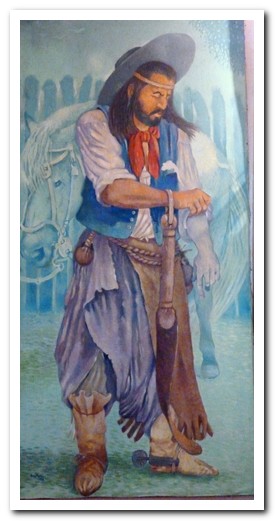
Brazilian gaucho

The wood fired Maria Fumaça enroute

Smoking Mary

Vineyards in Vale dos Vinhedos
Huaraz
11th September 2010
Our final stop in Peru was Huaraz, 400 kilometres north of Lima. Nestled below the 6000 meter snowy mountains of the Cordillera Blanca and the Cordillera Negra, it is Peru´s adventure capital.
.
The pre Inca Chavín culture occupied this area from approximately 1000 to 500 BC. Their biggest legacy, 109 kilometres from Huaraz, is Chavín de Huántar, a stone temple complex with cabezas clavas (keystones of projecting blocks in the shape of human heads with feline features). It was completed in 800 BC. In 1616 the Spanish monk Vasquez de Espinoza observed: “Junto a este pueblo …. Near this town of Chavín there lies a large edifice made of well carved stones of notable grandeur. It was a Huaca and the shrine of the most famous of the Pagans, like Rome or Jerusalem is to us, to which the native people came to make their offerings, because the devil in this place gave them many oracles, and thus they came from all over the kingdom. Beneath the ground are great halls and rooms.”
.
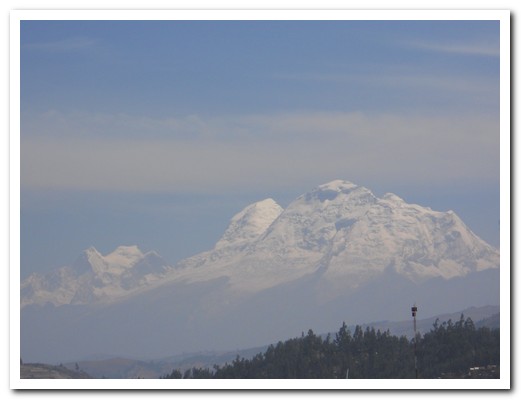
Snowy mountains surround Huaraz

Different town, different hat!

High altitude (4000 meters) lake
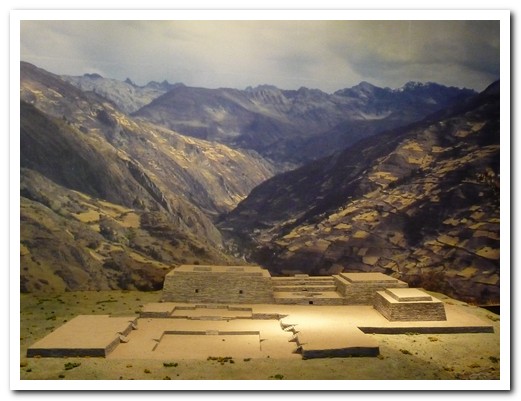
Model of how Chavín de Huántar would have looked

Outside walls

Main entrance

Llamas grazing near the ruins

These heads projected from the outside walls around the main building



Detail of rock carvings that adorned the circular plaza

Carved shell used as a trumpet
Cajamarca
09th September 2010
A 12 hour bus ride took us from Chachapoyas to Cajamarca, winding around the mountainsides through spectacular scenery along a narrow dirt road. At times we could not look down when all we could see below was thousands of meters of air. We knew we were in for something special when they handed out sick bags before we left.
.
Cajamarca was the administration centre for the Inca Empire. With its colonial buildings, Cajamarca is the prettiest and the most ¨Spanish¨ city in Peru. It was here the Spanish defeated (massacred) the unarmed Incas in November 1552. ¨Y como los indios estaban sin armas fueron desbaratados sin peligro de ningún cristiano.¨ (¨And as the Indians were without weapons they were destroyed without danger to any Christians.¨) Hernando Pizarro 1553. The only Inca building remaining is the ¨Ransom Room¨ – Atahualpa promised the Spanish a room full of gold and a room full of silver for his release, but was executed anyway.
.
In nearby Baños del Inca is Atahualpa´s own bath where the Spanish found him bathing when they arrived. We visited during the Fiesta de la Virgen de la Natividad. Everyone was in town dressed in their best, including their typical campesino (country folk) hats.
.
The pre Inca Caxamarca civilization were in this region from approximately 300 to 800AD. Evidence of their presence remains in the Otuzco Windows, a necropolis of now empty tombs resembling windows carved into the volcanic hills. Remains of important people who had first been buried in the ground for 2 years were then moved to the necropolis.
.

Bus ride 3500 meters up in the clouds to Cajamarca

The Cathedral

Iglesia San Francisco

Iglesia Las Concepcionistas Descalzas

Conjunto Monumental Belén

Angel on the ceiling

Angel on the wall

Conjunto Monumental Recoleta

Colonial buildings

Street in Cajamarca





The Inca Atahualpa indicating the height of gold in the Ransom Room

The Ransom Room today

The Inca was taking a bath here when the Spanish arrived

Typical sombreros of the area

Papas for lunch

Funeral niches ...

... at the Otuzco Windows
Chachapoyas
08th September 2010
An overnight bus took us off the gringo trail to Chachapoyas in the highlands of Peru´s Amazonas Province. Surrounding the delightful plaza are white balconied colonial buildings and dazzling white church. Our Hostal Amazonas and associated tour agency was inside one of them, with a lovely central courtyard. Outside of town, Señor Isove proudly shows off his orchids, collected from the surrounding area as a way of conservation.
.
We came to visit the ruins of Kuélap, a pre Inca fortified city of round stone dwellings at 3000 meters and a commanding view of the surrounding valleys. It was built in the 6th century by a fierce cloud forest dwelling civilization, the Chachapoyas. We found there was so much more to see, so we hiked up to an ancient burial site to the south, the Mausoleos de Revash, where important dead were laid to rest high up on the cliff face in natural crevices in the rock.
.
Further south, the little community Museum of Leymebamba contains 219 mummies and funeral offerings found recently (1997) near the Laguna de los Condores. The mummies were wrapped in textile with a face sewn on the outside. Opposite the Museum a lady feeds hummingbirds in her garden.
.
To the north of Chachapoyas we climbed to the Sarcofagos de Karajia where the mummies were carried up the cliff and a sarcophagus of clay and straw in human form was built around them. They stand up to 2 metres high and weigh some 200 kilos each. It is truly an eerie feeling to look up and see them all lined up along the cliff face.
.
It was well worth the trek down to El Pueblo de los Muertos, called the Village of the Dead for the many burial sites in the one area. Human bones, disturbed by grave robbers lie scattered around.
.
This remote area receives few visitors but has so much to offer and more is being discovered in very hard to reach places.
.

Chachapoyas Plaza

Many varieties of corn in the market

Hostal Amazonas







Kuélap fortress walls

Only one person can enter Kuélap at a time

Reconstructed dwelling inside the city - there were 400



Mausoleos de Revash

Mausoleos de Revash



Wrapped mummy from Laguna de los Condores

Mummies stored in the Leymebamba Museum





Sarcófagos de Karajia

Inca head tomb in the cliffs

The path to El Pueblo de los Muertos

Village of the Dead

Rock paintings indicate a burial site

Two faces look out in different directions

A group of three

Broken open by grave robbers

Bones scattered around



Local woman with child

Typical hat
Northern Peru – The Coast
02nd September 2010
Clocking up bus miles, we headed 9 hours north to colonial Trujillo, named in honour of Francisco Pizarro´s birthplace in Spain when he founded the city in 1534. Trujillo is home to the Peruvian stepping horse and the most elegant dance, the Marinera. The central plaza was alive with people celebrating the Virgencita de la Puerta saving the city from a pirate attack in 1674. People dressed as gypsies and slaves danced in the streets, illustrating Trujillo´s colonial past.
.
Pre Inca, civilizations of the Mochicas and then Chimus inhabited the area. The area is dotted with what appears to be huge mounds of sand, but are in fact ancient adobe temples. The Mochicas (approx 0 – 800 AD) had a custom of burying old temples under new ones which helped in preservation, and archaeologists are still peeling away the layers.
.
Recently in the Huaca Cao Viejo (El Brujo), a tattooed mummy of a Mochica queen was unearthed. Here is a YouTube movie of the discovery. Other Mochica temples include Huaca del Sol (Sun Temple)made from 140 million adobe bricks, now resembling a giant pile of rubble is still to be excavated. The smaller Huaca de la Luna (Moon Temple) is nearby. Until recently it was covered by tons of sand, preserving the beautifully decorated 5 level facade.
.
Chan Chan, in an outer suburb of Trujillo, was the capital of the Chimu Empire (approx 800 – 1470AD), and the largest adobe city in the world, housing some 1000 thousand people. We visited one of nine palaces with reconstructed walls highly decorated with figures resembling fish, pelicans and sea otters as well as mythical scenes and geometric shapes.
.
Totora (reed) boats, caballitos, are still used for fishing at the nearby coastal village of Huanchaco.
.
Further north lies Chiclayo. In nearby Sipán, in 2 adobe pyramids, to date 16 graves have been discovered in Huaca Rajada. The first one belonged to the Mochicas most important ruler, the Lord of Sipán. His body was covered with layers of ornaments and surrounded by offerings in hundreds of ceramic pots in forms of his relatives and friends. Six other people were sacrificed lie with him. Fortunately it had not been discovered by grave robbers. Grave number 16, discovered 2 weeks ago (mid August 2010) was being unearthed when we visited. The Museo Tumbas de Sipán in Lambayeque contains the articles found in this and other tombs, giving an excellent insight into the sophisticated culture of the Mochicas. It is one of the world´s great museums. No photos allowed (but look here)!
.

